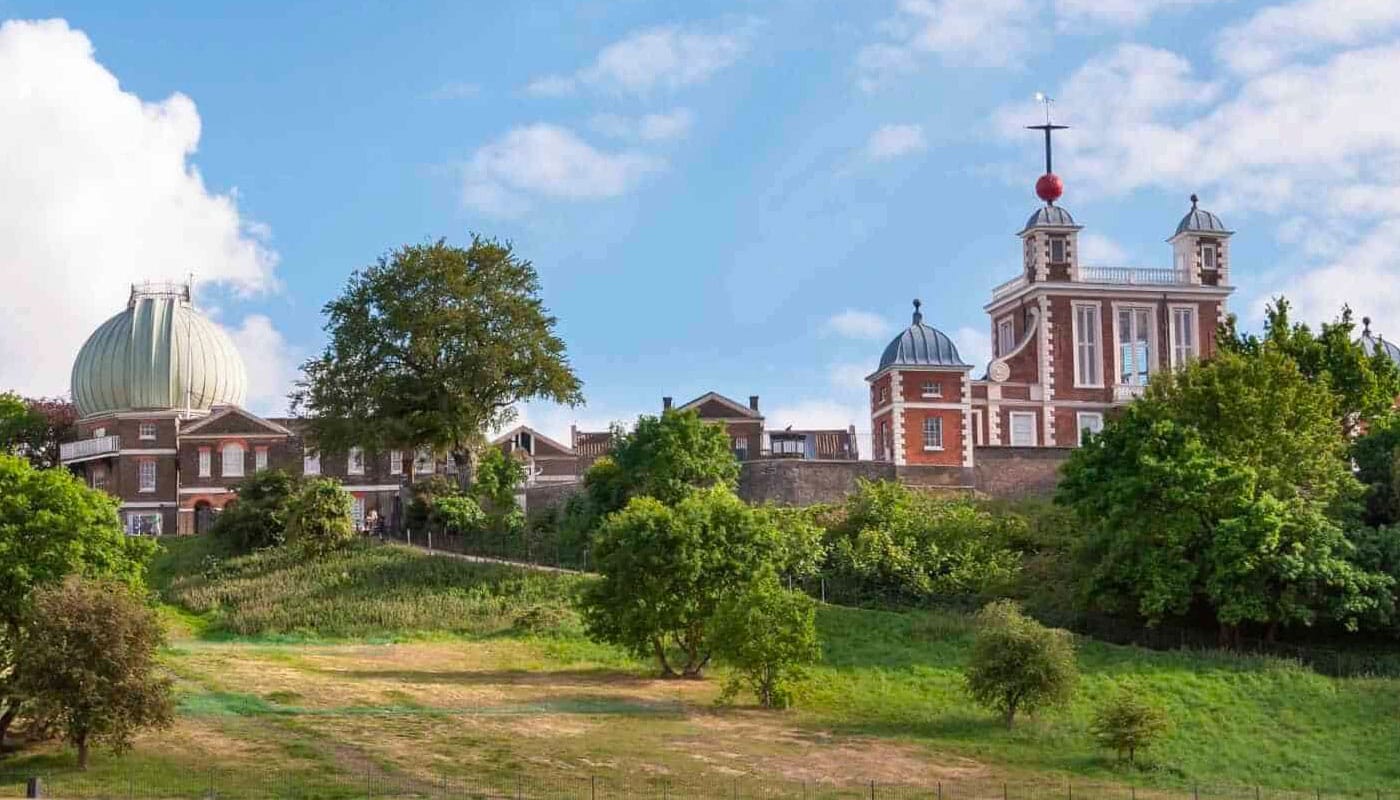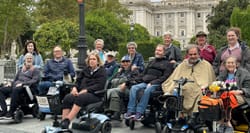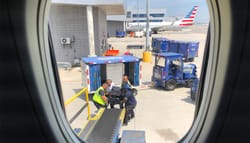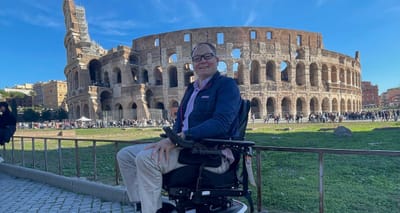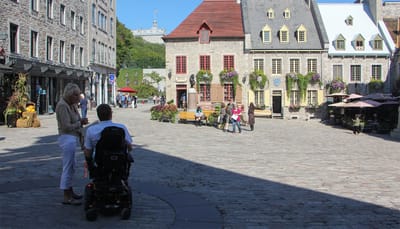The Royal Observatory, Greenwich is the historic center of British astronomy, home of the world’s Prime Meridian and a UNESCO World Heritage Site. It is one of the most popular tourist attractions in London, England. Combining a visit to the Royal Observatory with a stop at the wheelchair accessible National Maritime Museum, Queen’s House and the Cutty Sark makes for a great afternoon in historic Greenwich.
History of the Royal Observatory, Greenwich
In 1675, King Charles II appointed a Royal Commission in astronomy, which recommended that an observatory be founded. That observatory was built in a royal park, on the site of the destroyed Greenwich Castle.
From the Royal Observatory at Greenwich, 10 Astronomers Royal studied the night sky over a period of nearly 300 years. Their observations were used to improve the measurement of time and distance. In 1884, delegates from 25 nations selected the Greenwich Meridian, which stood at the position of Sir George Biddell Airy’s Transit Circle, as the Prime Meridian of the World. That meridian split the world into East and West, and defined the location of Longitude 0° 0′ 0”.
Maritime Greenwich, the area encompassing the Royal Park, Queen’s House, Old Royal Naval College and the Royal Observatory, was recognized in 1997 as a UNESCO World Heritage Site. In 2012, the Royal Observatory became part of Royal Museums Greenwich.
Tickets & Admission
Royal Museums Greenwich oversees the Royal Observatory, in addition to the National Maritime Museum, Cutty Sark, and the Queen’s House. Tickets are sold for individual attractions and in packages that provide a better deal.
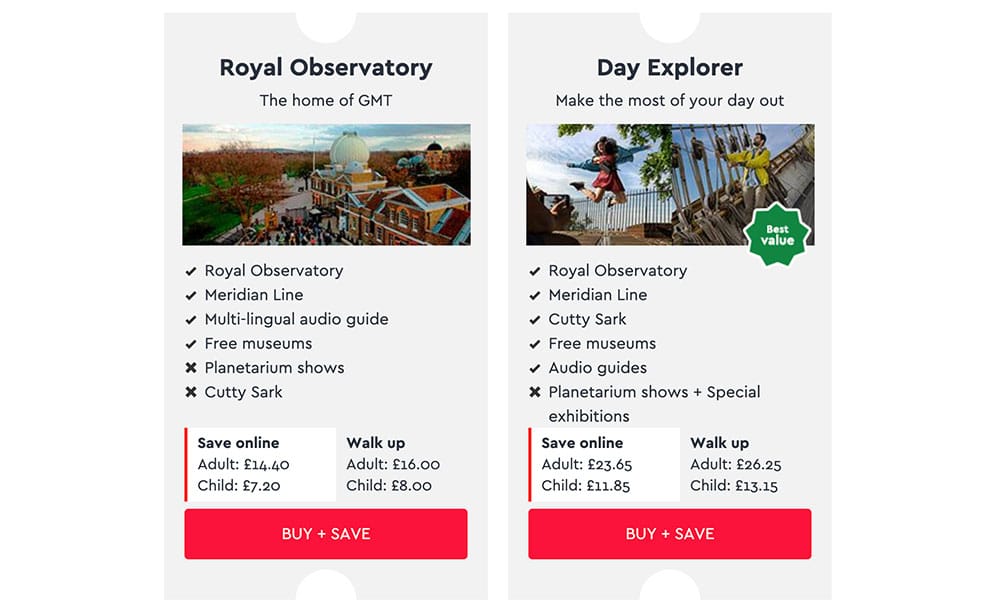
Because wheelchair access at the Royal Observatory is limited, entrance is provided at a reduced rate from the packages shown above. The discounted rates for people with disabilities are not published, but in my case the offer was £ 10 for admission to the Royal Observatory and £ 20 for the Royal Observatory and Cutty Sark combo ticket. I purchased the latter.
Entry into the Queen’s House and National Maritime Museum is complimentary, but tickets are sold for guided tours. Shows at the Peter Harrison Planetarium are also ticketed.
Free admission is offered to carers accompanying people with disabilities, including to most ticketed shows and exhibitions.
Wheelchair Accessibility at the Royal Observatory
Wheelchair access at the Royal Observatory is limited to a few locations, notably the Prime Meridian line, the ground floor of the Meridian building and an outer courtyard. Wheelchair access is not possible in the historic Flamsteed House and to the Great Equatorial telescope.
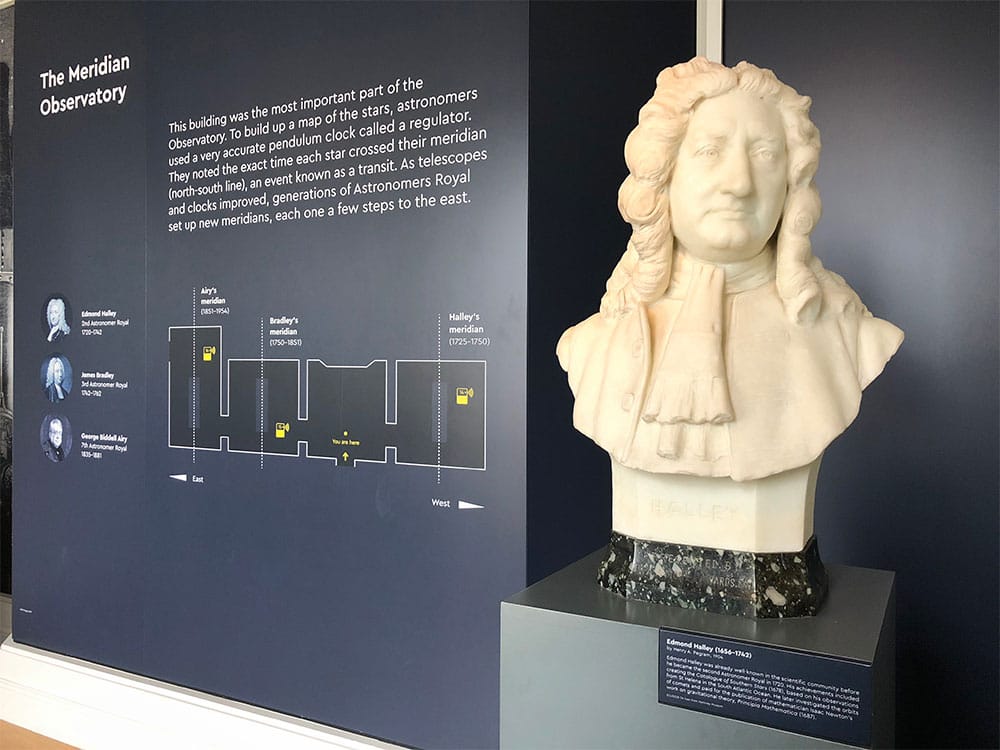
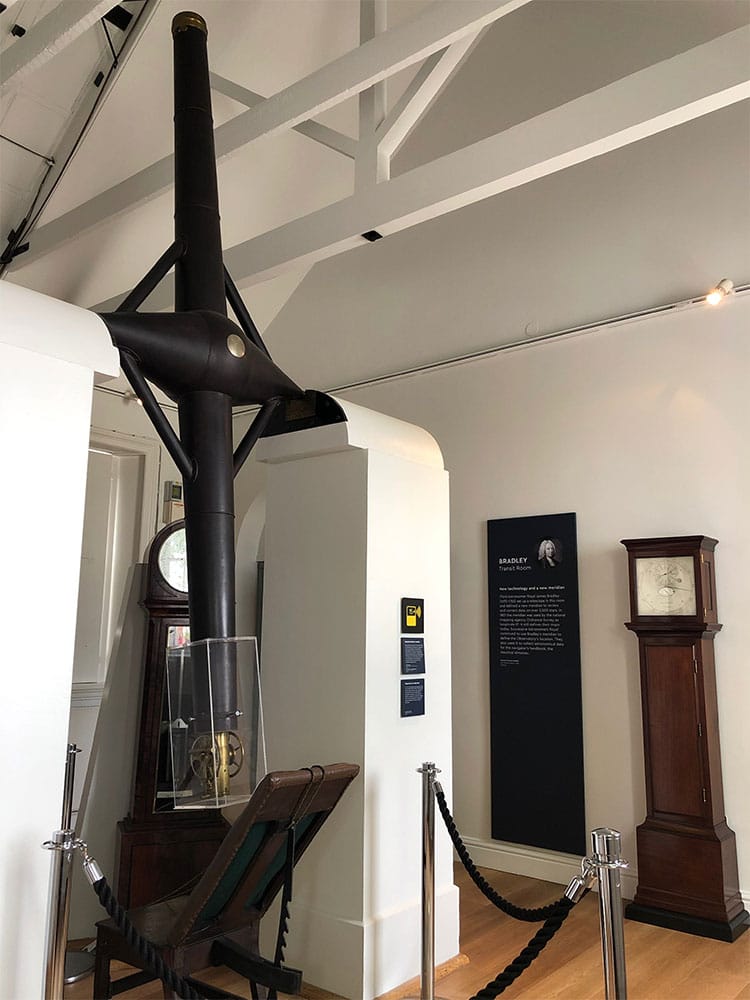
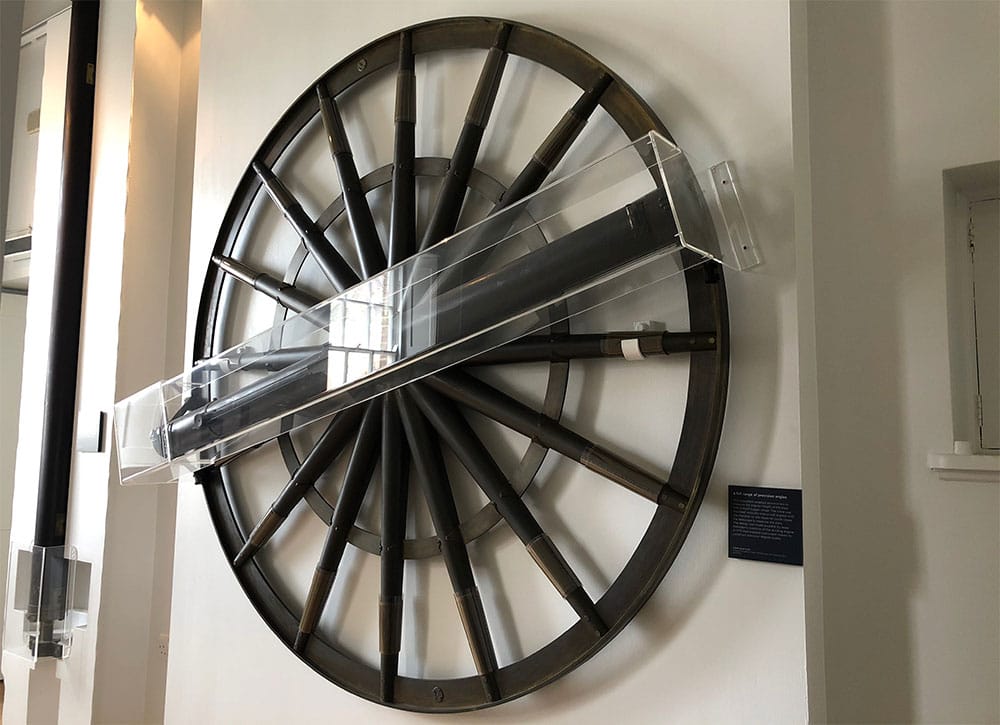
The exhibit on the ground floor of the Meridian Observatory is wheelchair accessible, and describes the history of the astronomers’ work at Greenwich. Of particular interest is Airy’s Transit Circle, a telescope designed by Astronomer Royal George Biddell Airy to measure the time at which a star crosses the meridian and the star’s precise coordinates in the sky.
In 1884, it was decided that the meridian line marked by the cross-hairs in the Airy Transit Circle eyepiece would serve as the world’s Prime Meridian, and the official position of 0° longitude.
The Prime Meridian
Although the true Prime Meridian has shifted a bit with time, the original line is still marked by the transit circle and also by a line in the courtyard outside the observatory.
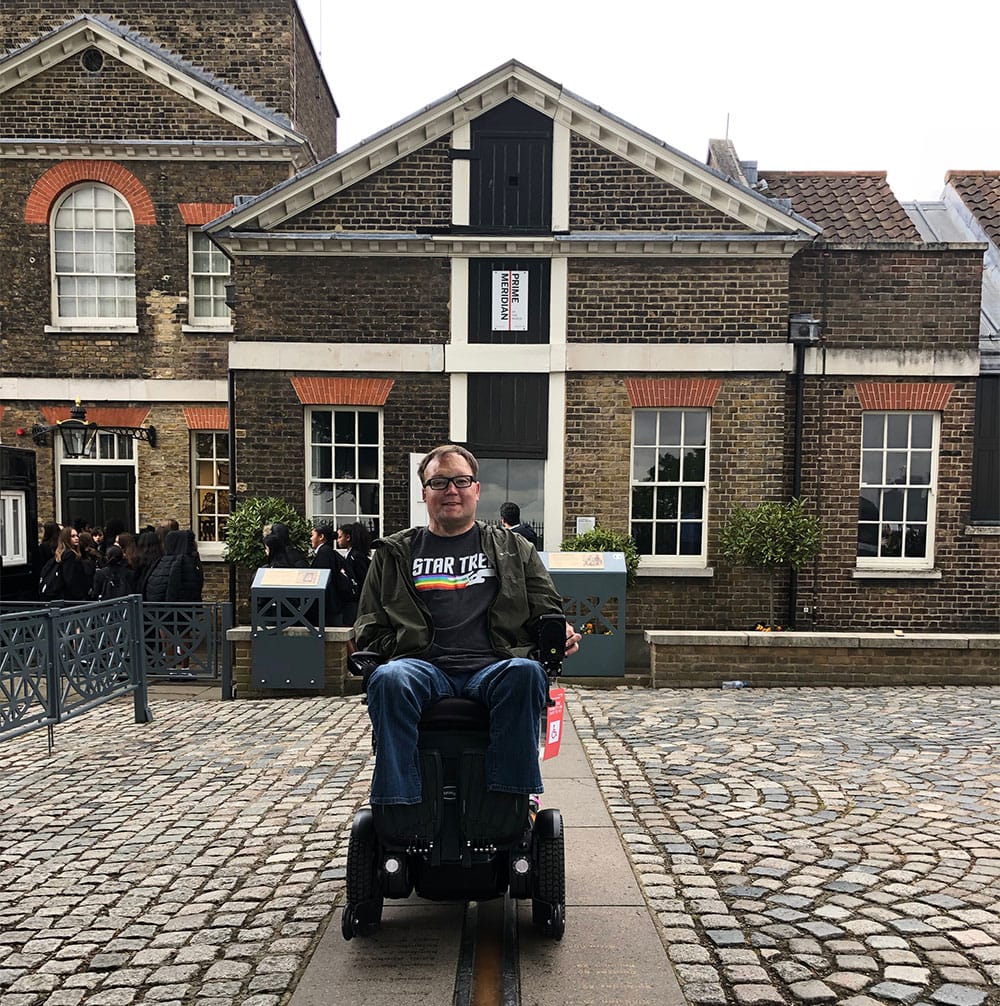
The weather was poor on the day of my visit, but I still managed to park my wheelchair o the Prime Meridian and take the photograph above. I wasn’t quite centered, but it was good enough, and I managed to get the beautiful observatory building in the background.
Nearby Attractions
The National Maritime Museum, Queen’s House and the historic Greenwich Town Centre are within walking distance of the Royal Observatory. Free entry is provided to all visitors of the museum and Queen’s House.
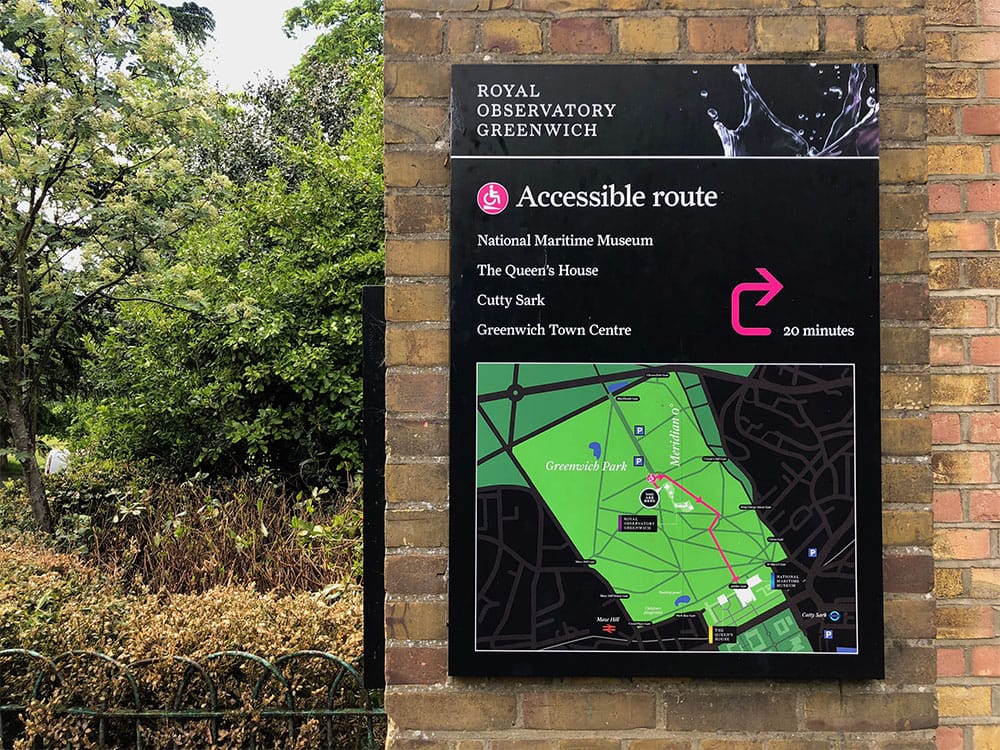
The most accessible route between the observatory and other attractions is a 20 minute walk/roll. Using my power wheelchair, it took only 10 minutes.
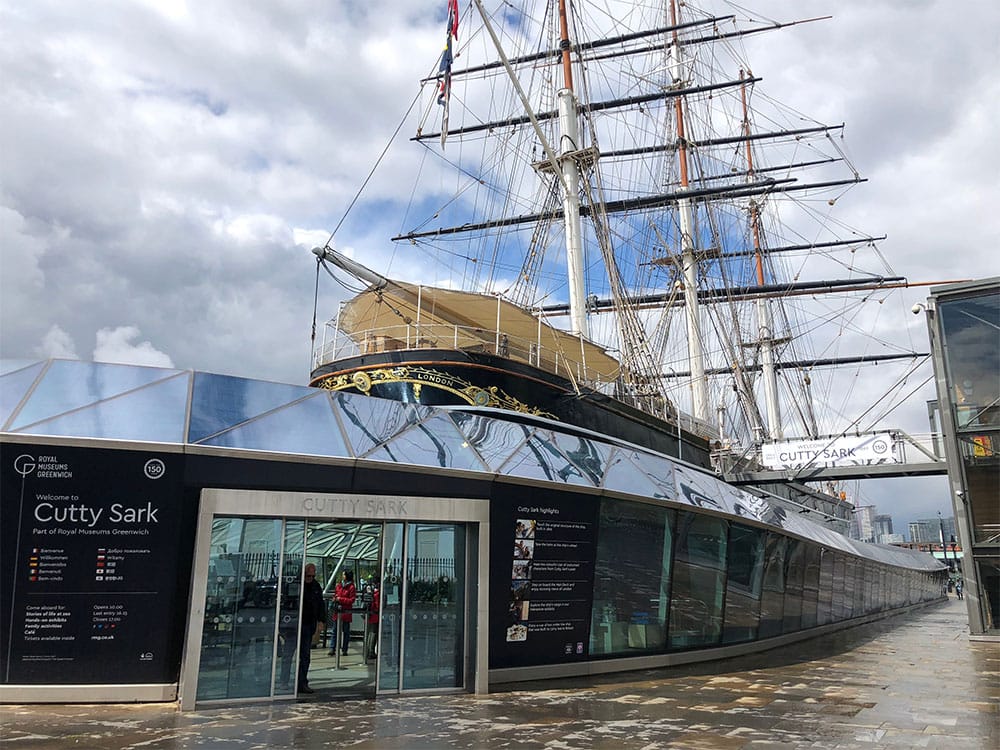
Visitors to the Royal Observatory shouldn’t pass on the chance to tour the Cutty Sark, a historic clipper ship that has been preserved in Greenwich. The ship was launched in 1869 and is more than 150 years old. It was constructed for the China tea trade, but carried cargo to destinations as far away as Australia.
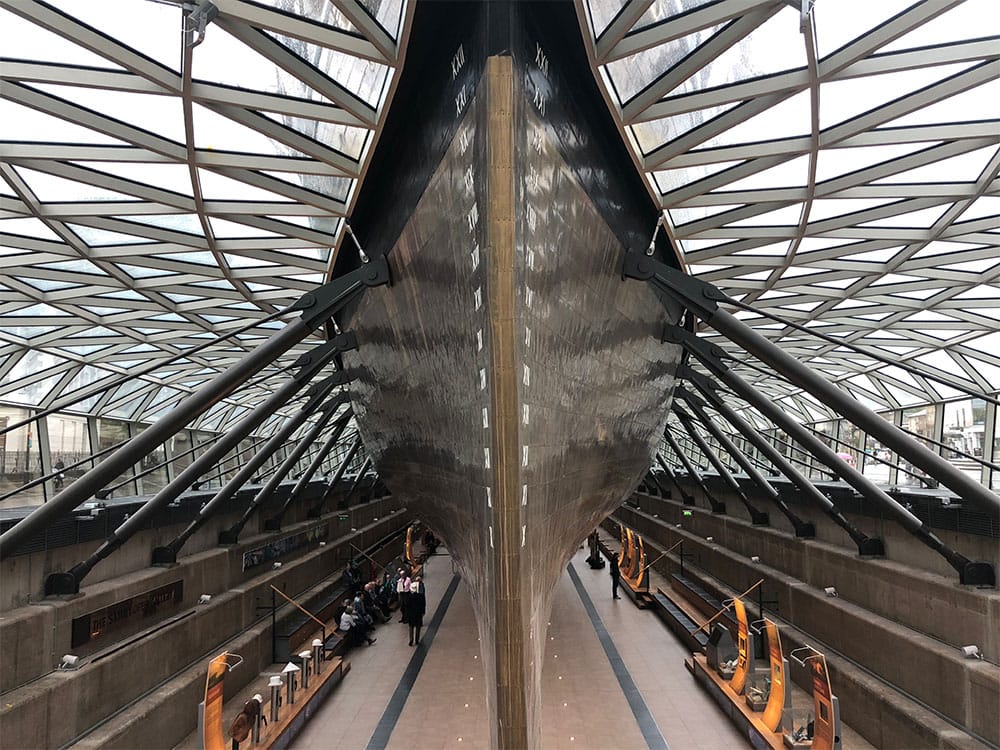
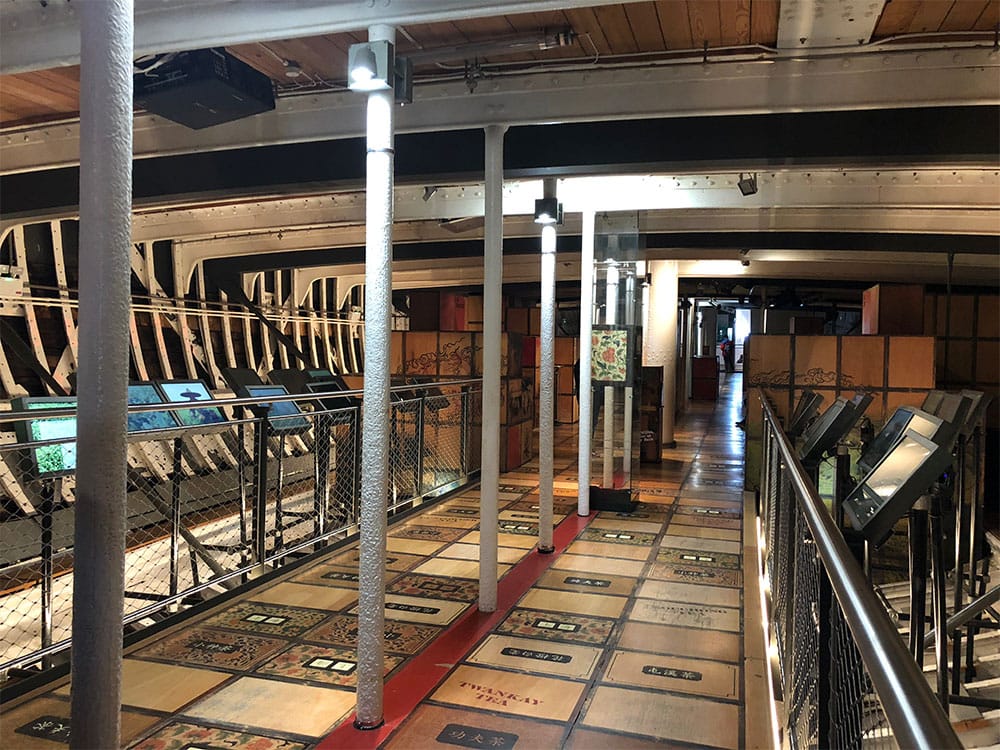
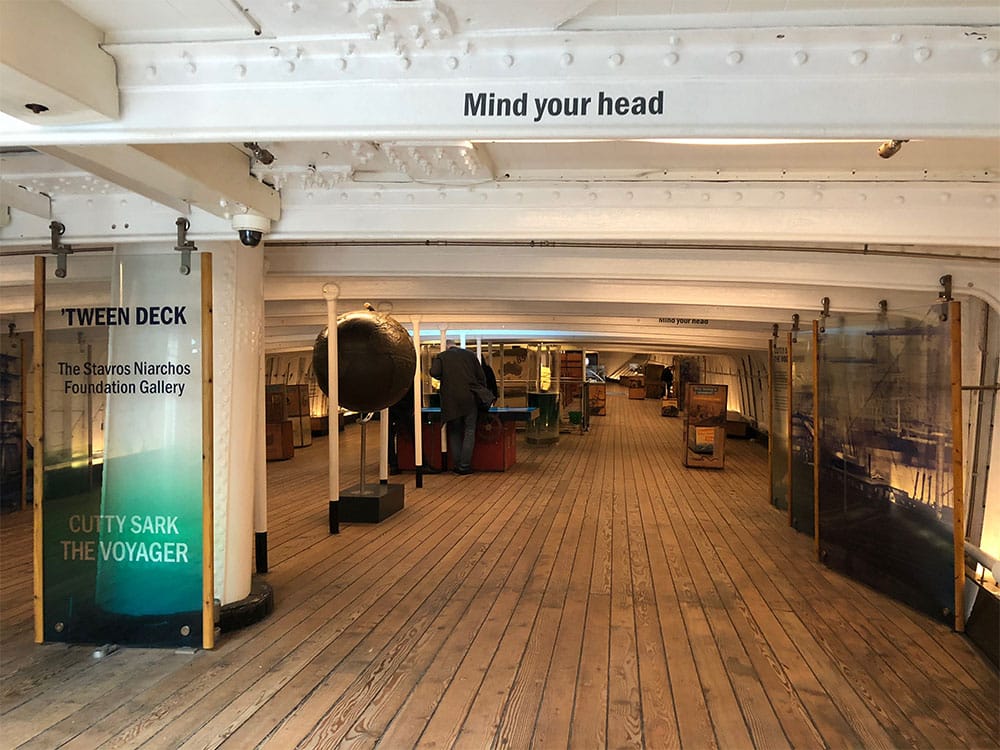
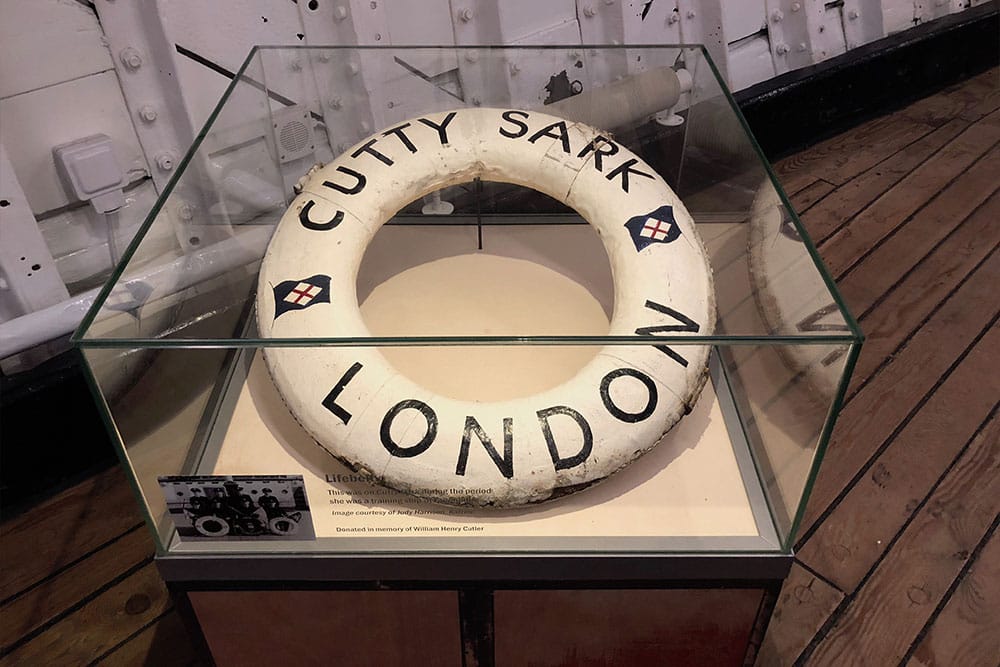
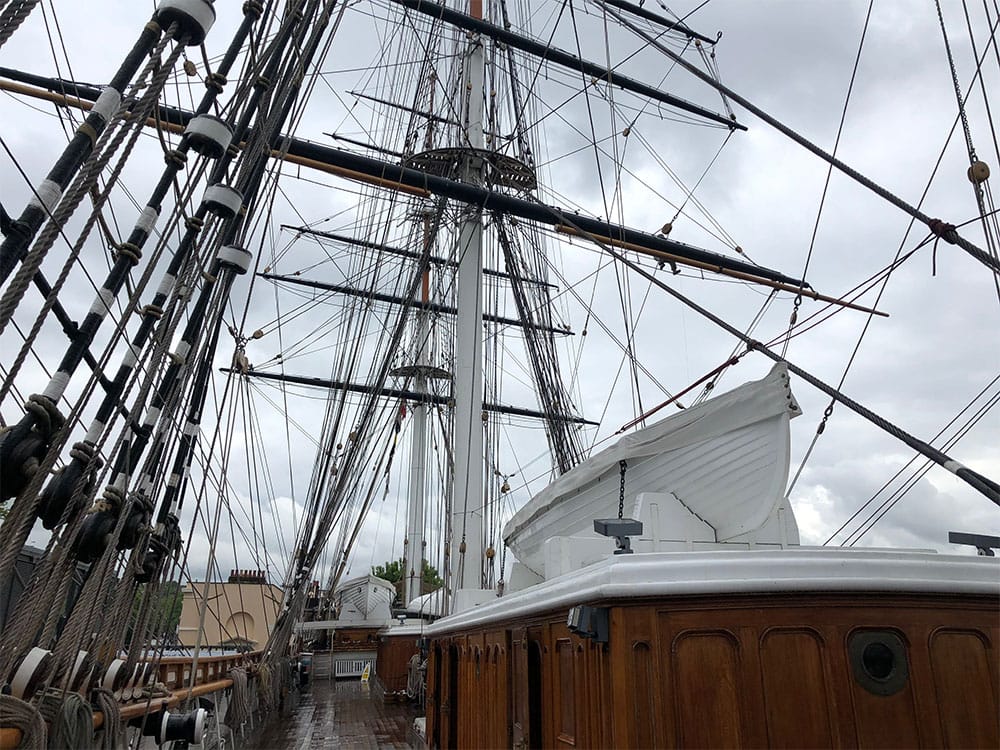
The Cutty Sark has been restored and is accessible on all decks via a lift. Wheelchair users can explore the ship from all angles, rolling underneath its hull and atop its main deck.
Getting to the Royal Observatory, Greenwich
The Royal Observatory, Greenwich, is located to the southwest of London, across the River Thames. The Thameslink, Southeastern and DLR trains stop nearby at Greenwich station. For detailed information on wheelchair accessible public transportation in London, click here.
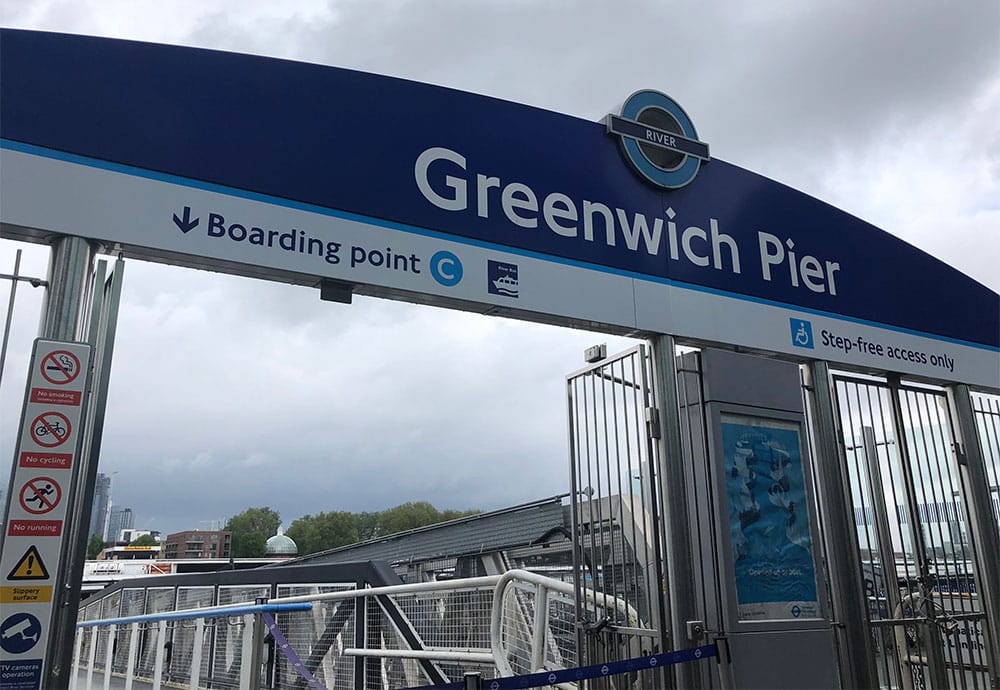
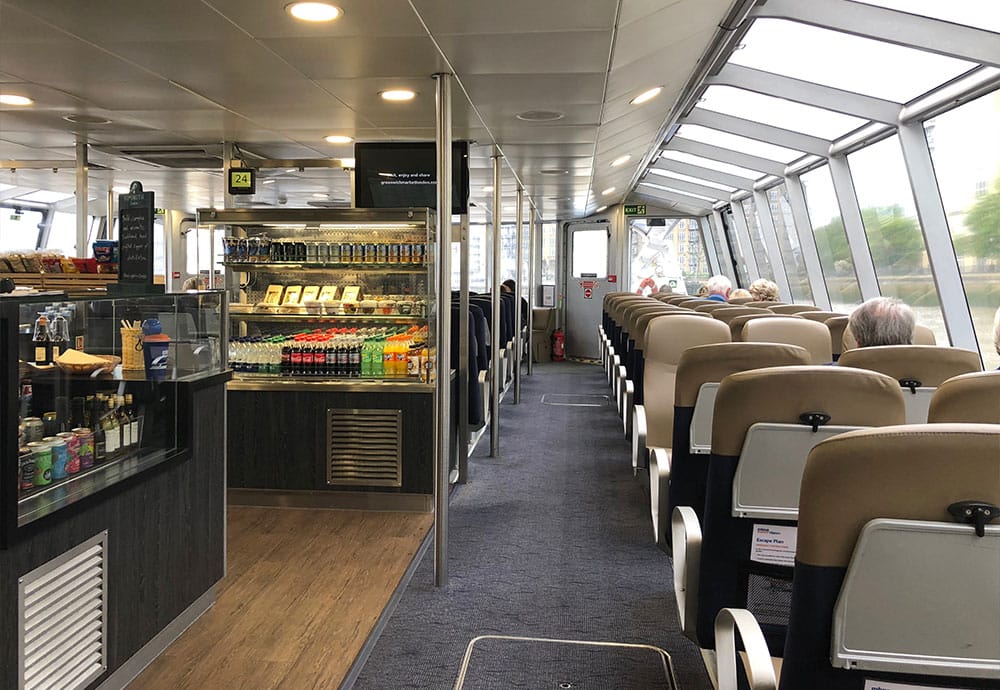
On the day of my visit, I took an UberWAV from Leicester Square to the Royal Observatory, at a cost of about £ 25 one-way. For my return journey, I decided to ride the London River Bus from Greenwich Pier to Embankment Pier. It was a great option, and offered me a different view of London from the Thames.
Final Thoughts
The Royal Observatory, Greenwich is an important historical site that has been well-preserved. Visiting the Meridian observatory and seeing the equipment used by Astronomers Royal over the centuries is a unique experience. Although only a portion of the observatory is wheelchair accessible, I left feeling satisfied, that I was able to see the Airy Transit Circle up close and to take my photo on the Prime Meridian. The chance to explore other attractions like the Cutty Sark and Queen’s House was a bonus that made for a really enjoyable afternoon of discovery.
Featured image courtesy historic-uk.com.

